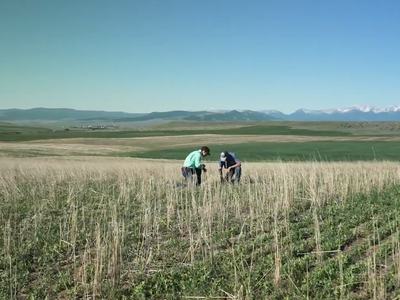Declining Bat Populations
Declining Bat Populations. I’m Greg Martin with today’s Line On Agriculture.
While the image of the bat has been used in many horror films as something that strikes terror in people the reality is that bats are an extremely important to farmers in controlling insects and in pollination. But officials are seeing a massive reduction in the numbers of bats.
FROSCHAUER: The most precipitous decline of North American wildlife in recorded history.
That’s Ann Froschauer with the U.S. Fish and Wildlife Service who was taking part in a special event at the Ag Department focusing on bats. She says they have been losing millions of bats every year.
FROSCHAUER: Mount Aeolus Cave in Vermont historically had about 300-thousand bats in it. We went in in 2010 and there were 35 bats left in this site. There was about an inch thick carpet of decaying bat carcasses and bones on the floor of the cave.
Loss of habitat has been cited as one reason for the declining numbers but a fungal disease called White Nose Syndrome has also been identified. At this rate the little brown bat species could become regionally extinct in 10 years and according to Froschauer...
FROSCHAUER: This could cost American farmers $22-billion dollars a year.
The Deparment of Ag is doing what it can to help combat the White Nose Syndrome.
Dennis Krusac with the Forest Service says they are trying to stop the spread of the fungus.
KRUSAC: All of our caves and abandoned mines in the east, that’s where the White Nose is on forest lands are closed to the public. Some caves in the west are closed. We’re managing based on risk. We’re doing pre and post White Nose population counts.
They are also adjust forest use policy to preserve and create more bat habitats. Terrell Erickson with the NRCS says that farmer conservation programs are also involved.
ERICKSON: We’ve used financial and technical assistance for shallow water developments, bat boxes on gates and caves.
Many farmers have found that they can put up bat boxes on their property and nesting bats eat a great many insects. The species of bats that have so far been stricken by the fungus can eat up to their body weight in insects a night, reducing insects that destroy crops, forests and carry disease such as West Nile Virus. This is an interesting story that we we will keep our eyes on.
That’s today’s Line On Agriculture. I’m Greg Martin on the Ag Information Network.

















